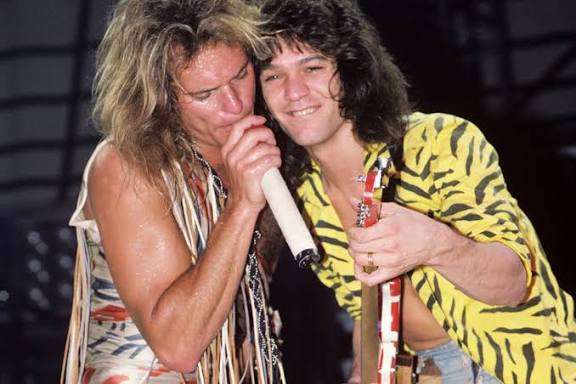
Few band breakups in rock history have been as dramatic — or as impactful — as the one between **David Lee Roth** and **Eddie Van Halen**. In the mid-1980s, what began as one of the most dynamic and innovative partnerships in music slowly unraveled under the weight of ego, ambition, and creative differences. Their clash didn’t just split Van Halen — it redefined the direction of one of rock’s most iconic bands.
At the heart of the feud was **creative control**. Van Halen’s early years were pure fire — the combination of Roth’s flamboyant charisma and Eddie’s revolutionary guitar playing made them unstoppable. Albums like *Van Halen* (1978), *Van Halen II* (1979), and *1984* didn’t just dominate the charts; they set a new standard for rock music. Roth was the quintessential frontman — witty, wild, and unpredictable — while Eddie was the quiet genius behind the music, constantly experimenting with new sounds and techniques. Together, they were electric.
But as the band’s fame skyrocketed, so did the tension. By the early 1980s, Roth and Eddie had very different visions for the band’s future. Roth wanted to keep Van Halen flashy and fun — a hard rock circus of energy and excess. Eddie, on the other hand, wanted to evolve musically. He was spending more time in his newly built 5150 studio, exploring synthesizers and more complex songwriting. The hit single “Jump,” driven by Eddie’s synthesizer riff, was a huge success, but it also symbolized the creative divide.
Roth reportedly disliked the band’s move toward a more polished, pop-oriented sound, believing it diluted their hard rock edge. Meanwhile, Eddie grew frustrated with Roth’s larger-than-life persona and his resistance to musical experimentation. Their personal differences only made things worse — Roth’s ego and showmanship clashed with Eddie’s quiet intensity and perfectionism.
By 1985, the tension had reached a breaking point. Roth, who had released a solo EP titled *Crazy from the Heat*, was starting to enjoy life outside of Van Halen. Rumors swirled that he wanted to focus on his solo career full-time, while Eddie felt that the band was being held back by constant infighting. Eventually, Roth officially left Van Halen, marking the end of an era.
His departure shocked fans but also set the stage for a new chapter. Eddie recruited former Montrose frontman **Sammy Hagar**, shifting Van Halen’s sound toward a more mature, melodic rock direction. The “Van Hagar” era brought commercial success, but it never quite carried the same raw, rebellious spark that defined the Roth years.
For years, both men traded barbs in interviews. Roth mocked the new Van Halen as too serious and safe, while Eddie dismissed Roth as a clown stuck in the past. Yet beneath the public jabs, there was a strange, unspoken respect — two artists who knew that together, they had created something magical.
In later years, time softened some of the bitterness. When Roth reunited with Van Halen in the 2000s, fans rejoiced to see the original chemistry return — even if the tension never fully disappeared. It was a reminder that some creative partnerships, no matter how volatile, produce brilliance precisely because of their differences.
The story of David Lee Roth and Eddie Van Halen isn’t just about a band breakup — it’s about two forces of nature colliding. Roth embodied the wild spirit of rock ‘n’ roll, while Eddie represented its soul and innovation. Together, they made history. Apart, they proved that greatness often comes with a cost.
Leave a Reply